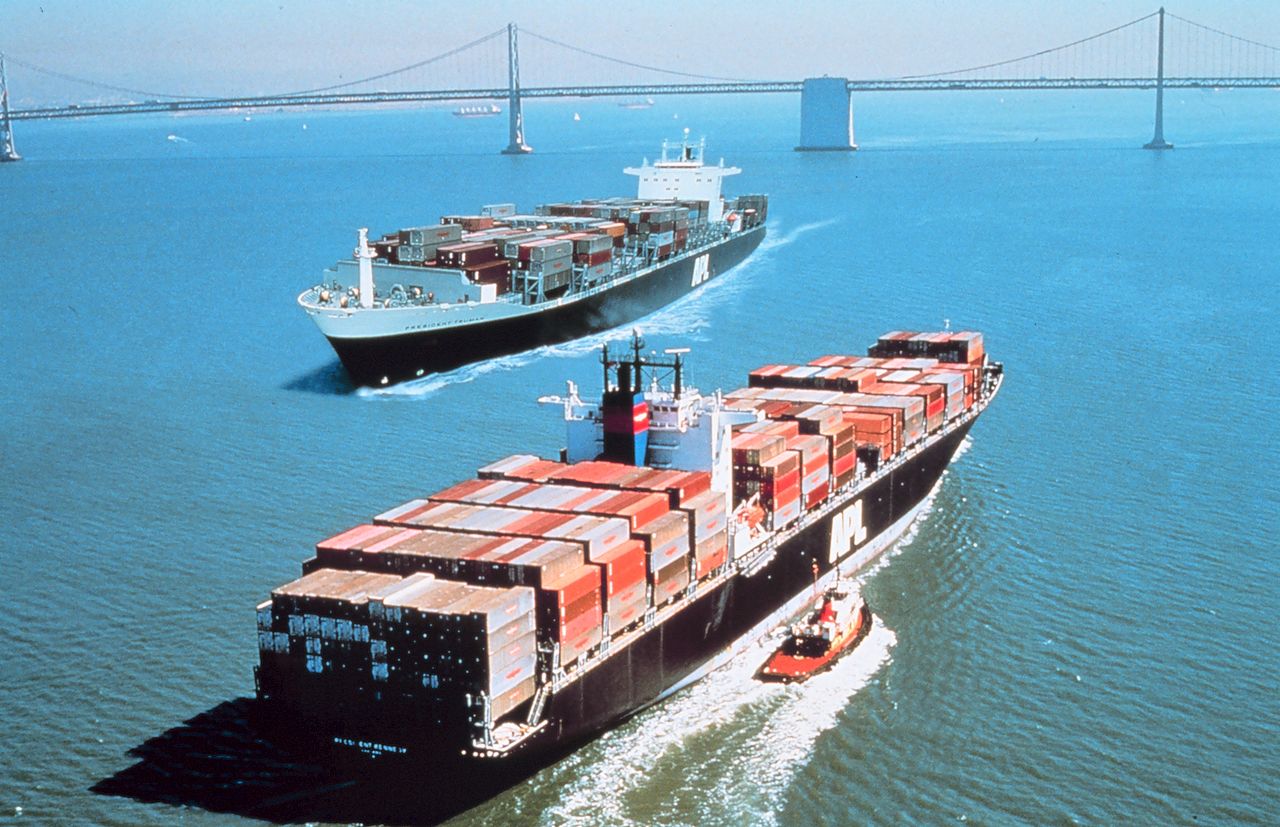The Cruise Line That Can Hardly Contain Itself
Let’s say that you wanted to go on a cruise for your next vacation. Even if you book it way in advance, you’re probably looking at a pretty hefty price tag, small rooms, or both. But you’re there for the cruise ship experience — they’re designed to be floating resorts, with fine dining, lots of drinks, casinos, all sorts of evening activities, pools and spas, etc. If it costs a couple of hundred dollars per person per day, well, that’s what you’re paying for.
But there’s another way to cruise — one that few people know about. On the plus side, the rooms are often larger and the entire experience can be much cheaper, often at half the price. No, there are no casinos and if there’s a magician, he’s never performed on a Vegas stage. That said, meals are typically included, too.
Here’s what the ships look like:

Those are container ships — in the picture above, they’re making their way through San Francisco Bay.
And yes, you can book a ride on them.
Container ships and other freighters don’t pilot themselves — they typically have crews of five to 15 people, give or take. Those crew members need a place to sleep and meals to eat, so there’s already a system in place if you want to take on a tourist, and that’s basically what happens. A traveller looking for a more authentic (and typically cheaper) experience just needs to find a ship willing to take a boarder for a trans-Pacific (or similar) trip. And that’s easier than one would think.
As Atlas Obscura explains, there’s a cottage industry of travel agents who will book you on a container ship — call it cargo ship tourism, if you’d like. Atlas Obscura spoke with Julie Richards, who works at a travel agency called “Freighter Expeditions.” Per Richards, you don’t get to bounce around tropical islands — cargo ship tourists go wherever the shipping routes dictate — but the rest of the details are up to you: “Trips may last just a few days, although some travelers sign on for 60 days or even around-the-world journeys” and “once in port, travelers can go ashore to explore; it’s their own responsibility to make it back to the ship in time for departure.” (So yes, you can miss the boat.)
And while one would think that the low-frills experience would typically mean scant accommodations, that’s not often the case. According to one travel blog, for the price of the bargain cruise ship package (if not less) you get a lot: “passenger cabins on a cargo ship are large and more spacious than cabins on your average cruise ship. Beds and furnishings are functional and pleasant enough, but far from fancy. Located on the upper decks, you get private bathrooms, air conditioning, possibly a small refrigerator, TV, window views that may or may not be obstructed by the odd shipping container.”
That said, cargo ship tourism can be boring — there isn’t a lot to do during the days, and there’s no after-dinner entertainment. (It’s generally a nice, quiet time to read a book or watch some movies, if that’s your preference.) That said, it’s not a solitary experience. You typically get to dine with the captain and crew — and they’re typically very nice about it. Richards told Atlas Obscura that “they like to have the general public on board to give the officers and crew companionship during their long days at sea.”
Bonus fact: While some cargo ships take on passengers, others take on kites. The kites, though, aren’t being transported by the ship — the kites are the ones doing the transporting. A German company called SkySails, noting (per its website) that “winds at high altitudes provide abundantly more energy than winds at surface level,” has developed a huge kite system which uses wind power to pull cargo ships across the oceans. According to Wikipedia, the kites can save the ships as much as $1,500 per day in fuel. (Here’s a picture of a SkySail in action.)
From the Archives: The Great Pacific Garbage Patch: The main story is about something you may travel through if you’re a cargo ship tourist, but the bonus item is about what happened to some cargo that didn’t get to its intended destination (and really should have been a story unto itself, oh well).
Take the Quiz: Name the world’s busiest cargo ports (as of 2013).
Related: A huge kite. On the downside, it’s not so huge that it can pull a cargo ship. On the plus side, it’s rainbow-colored and shaped like a dragonfly.
